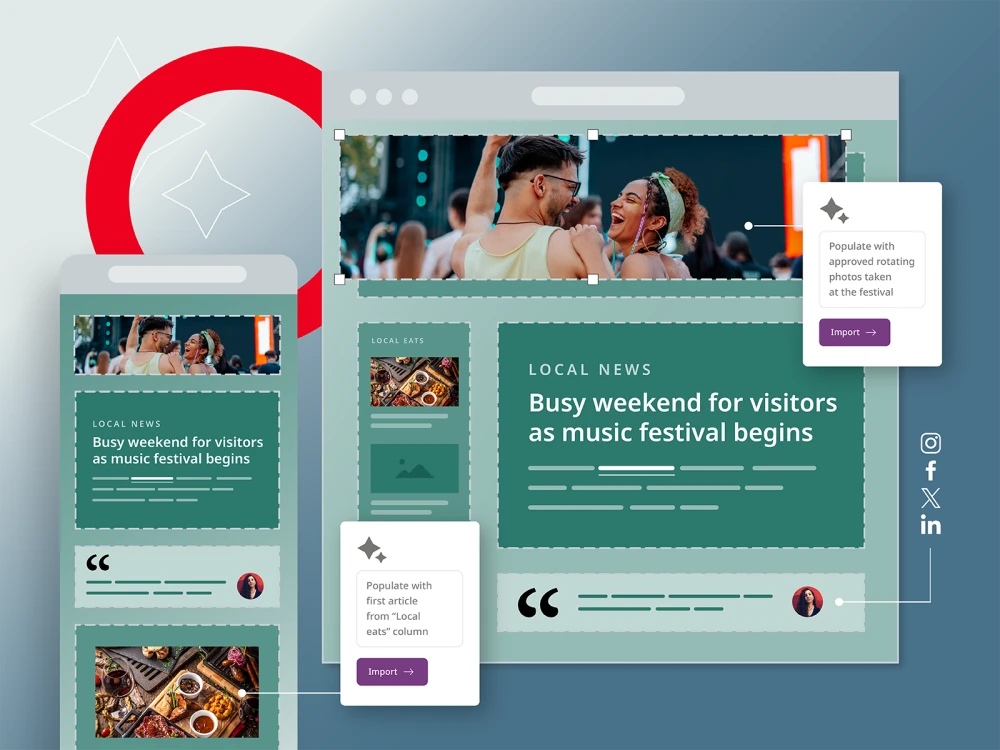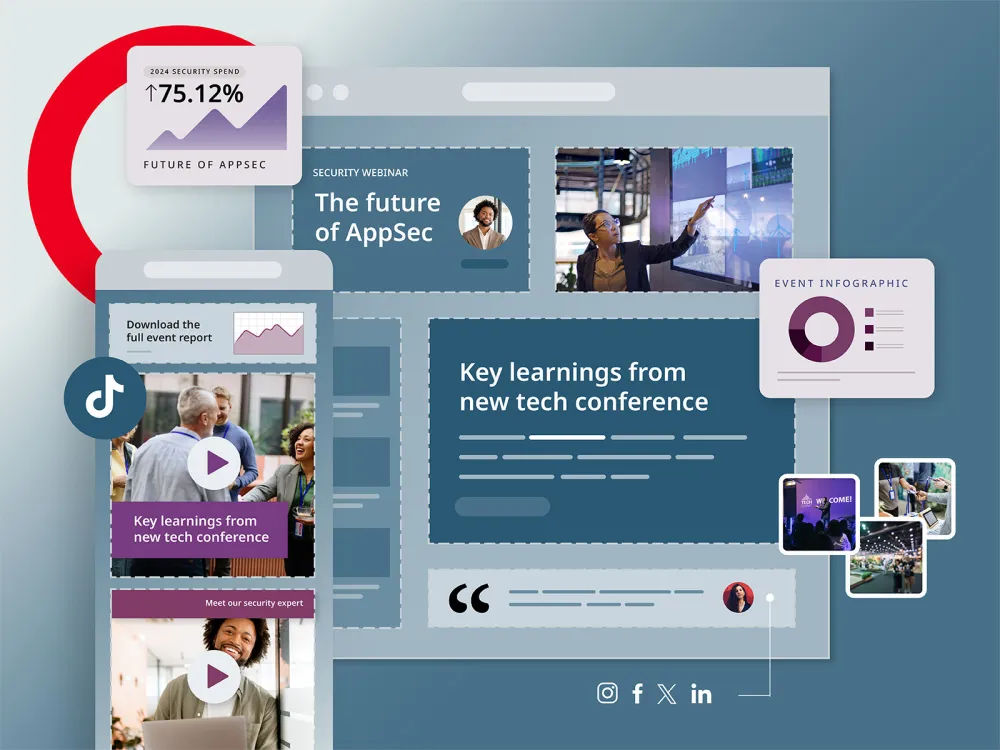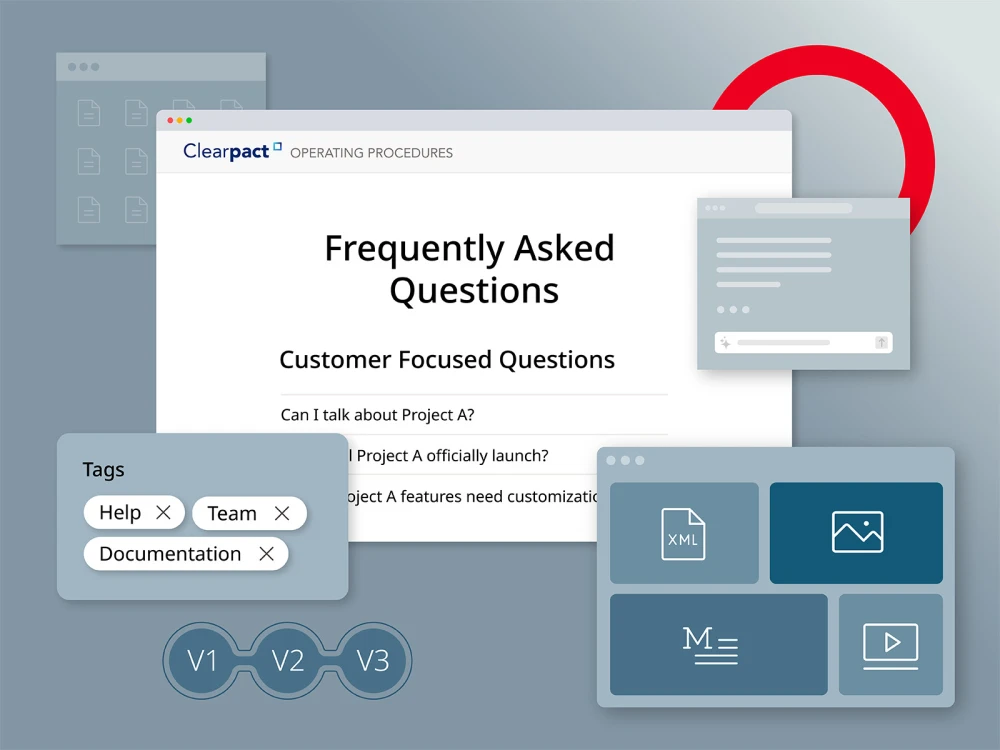It’s no secret that personalized content goes a long way when connecting to your target audience. With the ultimate goal of having those connections converted into sales, one key component of personalizing the experience with your audience—and making that sale—is localized content.
Content localization is the process of taking any content produced in an organization’s primary language (or context) and transforming it to be understandable by other relevant markets. The organizations that go beyond simple translation by using methods such as modular content and segmentation are those that truly make the content the right fit for audiences residing in different regions.
In fact, more than half of consumers said that the ability to obtain information in their own language is more important than price. That’s why we’ve ensured that the Brightspot CMS can further bolster your modular content, translation and segmentation capabilities to enhance your localization strategy, no matter how simple or complex your needs are.
What is localization?
The level in which localization is needed varies by use case and by region. For example, a global company that has business in Japan should have a website where all the content is in Japanese. Beyond the translation of language, the site will need to have relevant imagery and navigation to provide relevant context for customers in that region.
On an event page, say, the goal will be to navigate users within the region to purchase tickets, but for viewers outside of the region, the goal will be to navigate users to read about the event. Additionally, the news that’s relevant in Japan, of course, will be different than in Europe, the U.S. and so on, meaning each site or site section needs to present information that’s relevant—and understandable—to readers in the respective location.
Localization is also a powerful e-commerce tool. When promoting a product like a hotel room, for instance, localization can be used to provide room details as well as pricing in the user’s local language and currency. Variations to page layout while promoting products like a hotel room or airfare—for example, payment and guest loyalty options specific to a country or region—can also be tailored towards the viewer to ensure the best user experience.
Top 3 localization best practices
While there’s no “one size fits all” approach to localization, there are three essential building blocks to ensuring your localization efforts are successful, which are all supported by Brightspot CMS.
Localization tip #1: Expand global reach with translation tools
Why it matters: Brands are looking to expand their global reach by delivering localized experiences to increasingly diverse audiences. An essential component of any localization strategy is the ability to translate content into different languages accurately and efficiently (not to mention, cheaply).
Let’s say there are several multisite instances within the CMS, specifically for Canada, France, and Turkey. In this setup, content needs to be translated to the respective language from a single source of truth and then presented with variations as it relates to language, cultural and business nuances specific to each region.
How Brightspot supports: Brightspot has a robust architecture that comes equipped with “out-of-the-box” translation tools, giving users the flexibility to incorporate third-party translation tools such as Google Translate or AWS Translate. Custom workflows support automatic translation into multiple languages, as well as steps to incorporate manual translation and editorial review at any part of the process.
Localization tip #2: Deliver personalized experiences via audience segmentation
Why it matters: Audience segmentation gives marketers the upper hand to deliver more tailored messaging for stronger connections to customers across the globe. It’s important they have the ability to target different audiences with personalized content, offers and calls-to-action, whether it’s based on demographics, location, income and more.
How Brightspot supports: With Brightspot CMS, users have the ability to tailor content for different user personas. For example, you can set up a different homepage for mobile users versus desktop users—or even have different experiences for viewers tailored around a specific topic. Brightspot has a robust set of pre-built audience targets, so there’s no up-front dev support required. Within the settings, you can set up your targets and create segments directly for different sections of your website or down to the individual asset level.
Extending the language localization example above, let’s say a website based in the U.K. has a presence in Canada and Australia. Using CMS segmentation, audiences in Australia could be targeted with images of summer rather than winter for the benefit of seasonality; or headlines in English written for a U.K. audience could easily be updated for Canadian grammar and spelling without having to create multiple versions of the same asset in the CMS.
Localization tip #3: Reuse what you already have with modular content
Why it matters: Marketers need more control over how and where the content is produced, shared and disseminated. This is where modular content comes in. Modular content lets you create content once and publish across multiple channels, endpoints and wherever you need your content to be viewed. For global marketing and communications teams, this becomes especially valuable as campaigns and messaging can be organized from a centralized source and then disseminated based on target audience, language, and regional needs.
How Brightspot supports: Our CMS editing capabilities equip users with the ability to create modules that can be shared anywhere within a single site or throughout a network of sites; these modules can then be constructed as blocks to form a page, section or other content type. Removing one module from one asset but not another is simple. For example, you may have a global homepage layout but want to insert local stories and headlines specific to a region or country. Our modular approach will let you build language- or region-specific modules that can be transitioned through a workflow for approvals by your local news desk while not requiring additional work to create and manage modules that are inherited as part of global site network, thereby saving time and money as part of the publishing process.
How Brightspot can be your partner in localization
If your company needs a way to capitalize on content reuse to fit the right content into the right place, no matter the interface, Brightspot has the tools to help you get there. The Brightspot CMS can help you tackle the most complex localization and translation use cases, such as multi-page global sites, or help you manage simple websites.
Contact us today to learn more about how we support various customers with our multilingual CMS capabilities, plus discover how we can help solve for your business’ specific needs.









